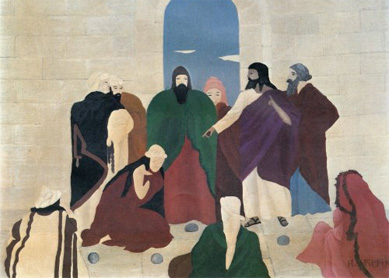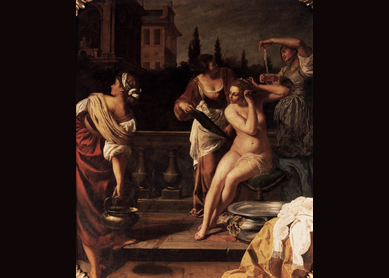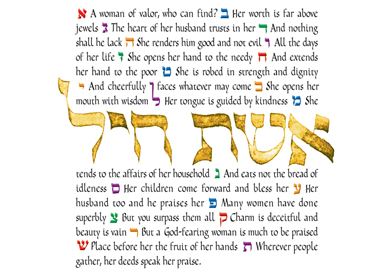According to the Bible, adultery is a serious sin. The Ten Commandments forbid it, and Leviticus and Deuteronomy say that couples who commit adultery must die. The prophets condemn adulterous men and women, the book of Proverbs warns against adultery, and the New Testament writers view adultery as sinful.
But on closer examination, the definition of adultery in much of the Hebrew Bible is one-sided. Men did not have to be faithful to one woman. They could have more than one wife (
One very important way in which men needed women was to produce sons who would carry on the family name, inherit the family’s land, and provide support in old age. But women might be barren or die in childbirth, and children, too, often died young. So a man might well need more than one wife at a time if he was to father sons who would survive to adulthood.
But he also needed to know that his sons were really his own: if his wife slept with another man, it threatened her husband’s line of descent and cast a slur on his manhood. It also challenged the convention that women were under men’s authority; so an adulterous woman was a very dangerous person. Just how dangerous is clear from the fact that, unlike the adulterous man, the adulterous woman is an independent motif of sinfulness, particularly in the Hebrew Bible.
The prophets Hosea, Jeremiah, and Ezekiel all use the metaphor of an adulterous woman to condemn the people of Israel who have been unfaithful to Yahweh, their “husband,” by worshiping other gods. The metaphor reflects the male-female power dynamics that would have existed in a marriage: the all-powerful deity who is entitled to demand absolute loyalty is represented by the husband, the male, whereas the people, who are supposed to be obedient and dependent, are represented by the wife, the female. But there is no equivalent metaphor of an adulterous man.
Another significant example of the adulterous-woman motif appears in
In the New Testament several writers warn men against adultery (e.g.
Bibliography
- Weems, Renita J. Battered Love: Marriage, Sex, and Violence in the Hebrew Prophets. Minneapolis: Fortress, 1995.
- Kreitzer, Larry J., and Deborah W. Rooke, eds. Ciphers in the Sand: Interpretations of the Woman Taken in Adultery (John 7.53-8.11). Biblical Seminar 74. Sheffield: Sheffield Academic Press, 2000.





